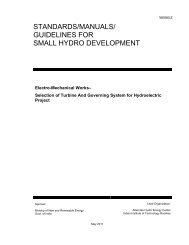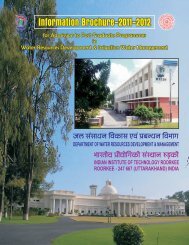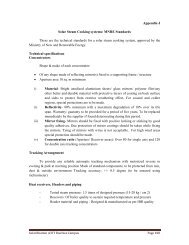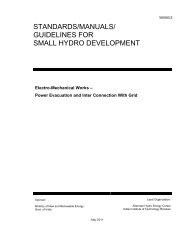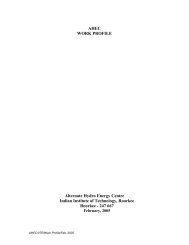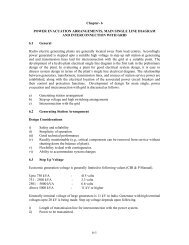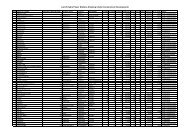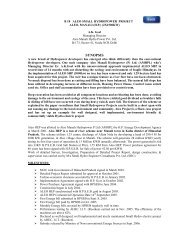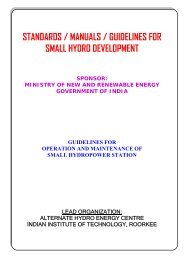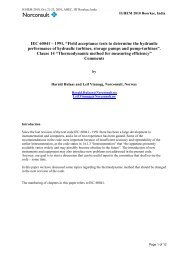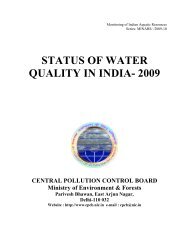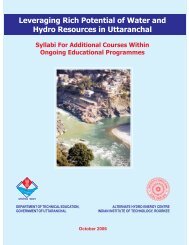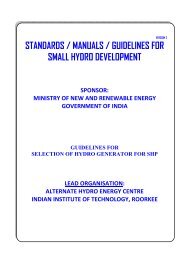standards / manuals / guidelines for small hydro development - AHEC
standards / manuals / guidelines for small hydro development - AHEC
standards / manuals / guidelines for small hydro development - AHEC
Create successful ePaper yourself
Turn your PDF publications into a flip-book with our unique Google optimized e-Paper software.
2.6 Insulator TypeTypes of insulators used:A) Bus Support Insulatorsi) Cap and Pin typeii) Solidcore typeiii) Polycone typeB) Strain Insulatorsi) Disc insulatorsii) Long rod porcelain insulatorsiii) Polymer insulators2.7 Switchyard StructuresThe cost of structures also is a major consideration while deciding the selection of asubstation. For instance, in the case of the strain/flexible bus-bar arrangement, cost ofstructures is much higher than in the case of rigid bus type. Similarly the <strong>for</strong>m ofstructures also plays an important part and the choice is usually between using a fewheavy structures or a large number of <strong>small</strong>er structures. While finalizing the design, sizeand single line diagram of structures, safety clearance requirements should be ensured.Steel is the most commonly used in India <strong>for</strong> substation structures. Normally the steelstructures are hot-dip galvanized so as to protect them against corrosion. However,galvanizing sometimes has not proved effective, particularly in substations located incoastal or industrial areas and in such cases painting also becomes essential. In othercountries special paints have developed which are applied within the shop and thesepaints have quite effective.2.7.1 Design Data <strong>for</strong> Design of Switchyard Structures(Based mostly on Tamil Nadu Electricity Board Practice)Design Loadsi) Wind Pressure on Structures (Refer table 7)Maximum <strong>for</strong> the area on 1.5 times the projected area of one face <strong>for</strong> latticedstructures and on single projected area in the case of other structures.In coastal regions the wind pressure may be assumed as 170 kg/sq.m.ii)Wind Pressure on Conductor1-13



